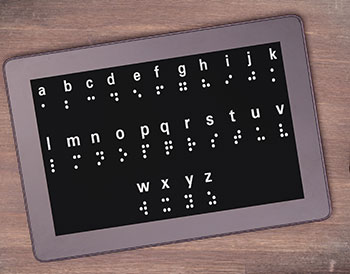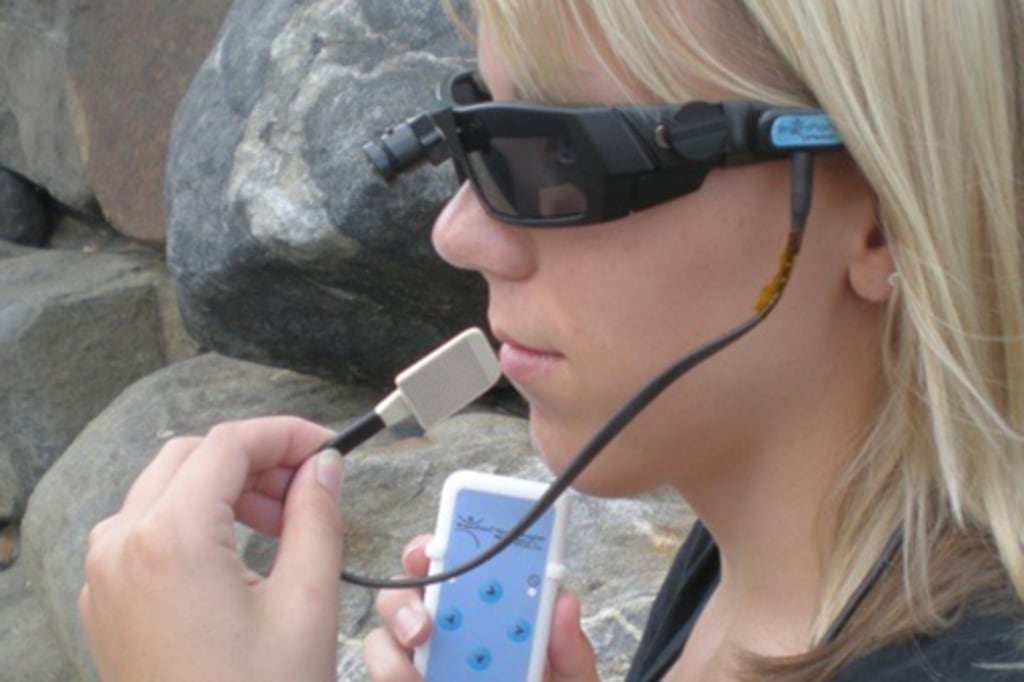Lightweight Technology for Low Vision: A Revolution in Accessibility
Lightweight Technology for Low Vision: A Revolution in Accessibility
Blog Article
Enhancing Lives With Advanced Assistive Gadgets for the Blind
The integration of advanced assistive tools for the blind is changing exactly how people experience their environments and interact with their neighborhoods. What does this evolution mean for the future of assistive modern technology and its role in equipping individuals?
Summary of Assistive Devices
Assistive devices for the blind encompass a varied variety of tools and technologies designed to improve independence and improve the lifestyle for people with aesthetic disabilities. These tools accommodate numerous demands, from navigating and flexibility to communication and everyday job administration.
One of the main groups of assistive gadgets consists of flexibility aids, such as white walking sticks and guide dogs, which aid customers navigate their surroundings safely. Electronic traveling aids, equipped with sensors and audio responses, also play a significant role in wheelchair enhancement.
Additionally, gadgets that help with daily living activities, such as adaptive kitchen devices, Braille labels, and talking watches, empower individuals to do tasks individually. Interaction aids, consisting of screen viewers and Braille screens, facilitate accessibility to details and make it possible for individuals to engage successfully with the electronic globe.
In addition, low-tech solutions like amplifying glasses and large-print materials stay vital for many individuals. Jointly, these assistive tools serve not just as useful devices but likewise as important enablers of autonomy, promoting higher involvement in a globe that frequently prioritizes sighted experiences. Their integration into day-to-day live is essential for advertising inclusivity and boosting overall health for those with visual problems.
Innovative Technologies in Use
Development in technology has actually substantially changed the landscape of tools readily available for individuals with visual impairments. Amongst one of the most remarkable innovations are smart glasses integrated with augmented reality, which offer real-time navigating help and object recognition. These tools take advantage of advanced electronic cameras and synthetic knowledge to supply acoustic cues, boosting the user's spatial awareness and autonomy.
In addition, mobile applications have become effective sources, allowing individuals to identify money, read message out loud, and navigate unknown atmospheres through verbal instructions. Devices such as Braille display screens and refreshable Braille devices remain to advance, providing smooth connectivity with mobile phones and computer systems, therefore improving communication and access to information.
Wearable innovation, including smartwatches equipped with voice-activated attributes, further equips customers by assisting in quick accessibility to alerts and notifies without requiring aesthetic involvement. Responsive maps and 3D printing are additionally getting grip, offering concrete representations of spaces that aid in alignment and movement training.
Collectively, these innovative technologies not just enhance the day-to-days live of visually impaired people but likewise foster higher freedom, inclusivity, and engagement with the wider area, consequently improving understandings of availability. (Speech-to-text devices for low vision)
Individual Stories of Empowerment
Empowerment frequently arises from personal experiences that highlight the transformative effect of modern technology on individuals with aesthetic problems. Take, for example, the tale of Sarah, a young artist who reclaimed her interest for painting with using a wise walking cane outfitted with barrier discovery. This tool not only promoted her mobility yet instilled a newly found confidence, allowing her to navigate public spaces individually and seek her innovative ventures.

These stories underscore the extensive results that advanced assistive gadgets can carry life. By allowing people to overcome obstacles, technology fosters a sense of autonomy and self-worth. Such empowerment stories serve as a testament to the possibility of see this here technology, illustrating just how the right devices can significantly boost lifestyle and open doors to brand-new opportunities for those with aesthetic impairments.
Benefits of Advanced Solutions
Just how can advanced solutions fundamentally improve the lives of people with aesthetic impairments? The assimilation of cutting-edge technology into assistive devices substantially changes everyday experiences for those influenced by vision loss. These sophisticated remedies provide unmatched freedom, making it possible for customers to navigate their settings with confidence. Gadgets such as wise walking canes furnished with sensors, navigating applications, and wearable innovation are designed to offer real-time comments, improving spatial awareness and decreasing the threats linked with mobility.
Moreover, progressed assistive technologies cultivate social inclusion by promoting communication and communication. Voice-activated tools and applications permit people to access information and involve with their surroundings independently, damaging obstacles that formerly impeded their participation in instructional, expert, and social settings.
Furthermore, the customization and versatility of these options deal with the varied requirements of customers, thereby boosting their overall lifestyle. Improved functionality, such as item recognition and text-to-speech abilities, encourages people with visual impairments to carry out tasks that they might have when located challenging. Eventually, advanced assistive technologies not just enhance self-reliance and safety and security but likewise promote dignity and self-regard, enabling users to lead satisfying lives.
Future Fads in Assistive Technology
As innovation remains to develop, the landscape of assistive devices for the blind is poised for impressive developments that will certainly even more boost access and self-reliance. Emerging fads in assistive innovation show a change towards raised integration of expert system (AI) and artificial intelligence, allowing tools to adjust to specific user requires in real-time. These technologies are anticipated to help with even more user-friendly navigating systems that can determine barriers and provide audio responses, dramatically improving outside wheelchair.
Additionally, the growth of wearable tech, such as clever glasses furnished with increased reality, will certainly allow users to obtain contextual information regarding their surroundings, consequently enriching their spatial recognition. Additionally, innovations in haptic modern technology promise to create tactile responses devices, enabling clear eyeglasses customers to perceive info with touch, boosting learning and interaction with their setting.
Telecommunication developments are additionally leading the way for remote aid options, where experienced experts can supply assistance using video calls, making certain support is conveniently accessible. As these patterns unfold, the future of assistive devices for the blind will unquestionably cultivate greater freedom, encouraging people to browse their world with self-confidence and simplicity.

Final Thought
The combination of advanced assistive tools for the blind stands for a significant innovation in fostering freedom and improving lifestyle. By utilizing cutting-edge technologies, these tools encourage users to navigate their settings with higher confidence and autonomy. As the area same day glasses proceeds to develop, continuous r & d will likely yield much more sophisticated solutions, even more transforming the lived experiences of people with aesthetic impairments and advertising a higher sense of inclusion within society.
The combination of sophisticated assistive gadgets for the blind is changing how individuals experience their environments and interact with their neighborhoods. The combination of cutting-edge modern technology into assistive gadgets significantly transforms everyday experiences for those impacted by vision loss.As modern technology proceeds to develop, the landscape of assistive gadgets for the blind is positioned for impressive innovations that will certainly further boost accessibility and independence. Arising trends in assistive technology indicate a change toward enhanced combination of artificial knowledge (AI) and maker knowing, making it possible for gadgets to adapt to specific user needs in real-time.The assimilation of innovative assistive devices for the blind stands for a significant improvement in cultivating independence and boosting quality of life.
Report this page